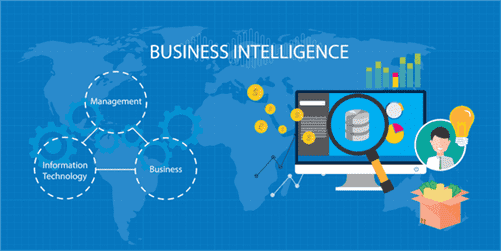Getting ahead of cyberattacks with a DevSecOps approach to web application security
By integrating security testing into the development cycle and working closely with the development teams, often other bugs and defects that may impact the quality of the software can be found. Nearly 74% of security professionals said their organizations have either shifted security into the earlier stages of development or plan to in the next three years. In the early days of software development, most attacks required physical access to a terminal on the machine running the application, which meant a lower risk of software being manipulated by someone on the outside. In the years that followed, enterprises adopted new software development methodologies, yet security was rarely prioritized within the SDLC. Instead, organizations assigned application security to dedicated security teams and testing took place after an application’s release. This can leave potential vulnerabilities exposed to attackers for exploitation for weeks or even months.
DevSecOps adds security concepts to the development and operations teams which form the foundation of DevOps. The primary purpose of DevSecOps is to make security a vital part of the software development process, considering security issues at each stage of the pipeline. Organizations should step back and consider the entire development and operations environment. DevSecOps teams use interactive application security testing tools to evaluate an application’s potential vulnerabilities in the production environment. IAST consists of special security monitors that run from within the application. Software developers no longer stick with conventional roles of building, testing, and deploying code.
Products
For example, AWS CodePipeline is a tool that you can use to deploy and manage applications. Plus, as more organizations adopt a DevOps approach, which automates and integrates the processes between software development and IT teams, traditional security tools are often no longer adequate. Developers today need to embed security measures into every stage of the development workflow. When it comes to security for DevOps workflows, this practice is referred to as DevSecOps. According to Wysopal, the reason why achieving the last step is hard is because developers must build up the skill set required to fix security-related bugs without outside guidance and that takes time. Many teams get there by embedding a so-called security champion within their development teams.
- Traditionally, major software developers used to release new versions of their applications every few months or even years.
- Rather than retrofitting security into the build, DevSecOps emerged as a way to integrate security management earlier in the development process.
- Throughout development, testing, and operations, continuously monitor software for vulnerabilities.
- This raises the importance of permission and access management since everything can be accessed from anywhere.
- DevSecOps refers to the integration of security practices into a DevOps software delivery model.
- This was manageable when software updates were released just once or twice a year.
- But asking developers to build then subsequently maintain platforms has placed significant strain on teams, Polan noted.
DevSecOps is about creating a culture where security is a part of everyone’s job, not just the people specifically working in security roles. Security needs to be at the top of every developer’s mind as they build, test, and release features to production. By investing in continuous skill development, teams can equip themselves with the necessary expertise to tackle new security challenges effectively. Furthermore, fostering a culture of knowledge sharing within the team encourages the exchange of insights and lessons learned from security incidents or successful security measures. In the realm of DevSecOps, it is crucial to stay updated with emerging threats and technologies to ensure robust security practices. DevSecOps advocates treating security configurations, policies and practices as code as a means to apply consistent and repeatable security controls as well as track changes.
Security testing principles every developer should know
DevSecOps is an outgrowth of the DevOps movement, which aims to accelerate the software development lifecycle and enable the rapid response schedule of applications and updates. DevSecOps builds on this agile framework by incorporating security measures within each phase of the IT process in order to minimize security vulnerabilities and improve compliance – all without impacting speed of release cycles. Silicon Valley tech companies led the way in devsecops adoption early on, but the security testing tools available at the time were not developer-friendly.

Effective implementation of DevSecOps requires the selection of appropriate tools, the establishment of a collaborative culture and compliance processes, and the incorporation of threat modeling. As organizations increasingly prioritize security in their software development, DevSecOps will continue to play an important role in ensuring the integrity and safety of software applications. From https://www.globalcloudteam.com/ here, you’ll be able to create common, sharable automated pipelines that include security checks into your application development processes. This approach will ensure that security and consistency are built into your applications from the very beginning. Security doesn’t stop after deployment; continuous monitoring and alerting are required during the complete life cycle of an application.
Tip #1: Understand Your DevSecOps Goals
To make the difference between DevOps and DevSecOps clearer, DevSecOps extends the DevOps culture of shared responsibility to also include security practices. Activities designed to identify and ideally solve security issues are injected early in the lifecycle of application development, rather than after a product is released. This is accomplished by enabling development teams to perform many of the security tasks independently devsecops software development within the software development lifecycle . DevSecOps is all about automating and integrating security within all phases of the software development life cycle to produce more secure code more quickly and easily. There is much more to DevSecOps, and you can explore it further as you build upon the foundation of these initial recommendations. Customers and business stakeholders demand software that is fast, reliable, and secure.

DevOps is a concept that encourages increased collaboration between development and operations teams, enabling them to envision, deliver, and maintain software applications at a consistently rapid pace. Many teams enable a DevSecOps mindset by including a security champion within their development teams. This is someone who has expertise in application security and has taken more advanced training in this field than most of the team.
Cutting power bills and emissions with a modernized and efficient IT infrastructure
The business will innovate more quickly because security is integral to the process, not a hindrance to it. The result will be less risk of data breaches, more secure applications, and continuous security monitoring of cloud resources and services. Automated security testing tools, such as Static Application Security Testing and Dynamic Application Security Testing , can be integrated into the testing process to identify security vulnerabilities. Continuous monitoring, log analysis and incident response processes enable organizations to detect security incidents promptly and respond effectively.
The use of virtualization technology in DevSecOps has enabled greater security from the start, as well as shorter development cycles, reduced costs, and increased agility. Virtualization is essential for any team looking to take advantage of DevSecOps and ensure their mobile and IoT applications are not only more secure, but also built and tested efficiently. Updates and patches can also be done within a tighter turnaround, leading to faster and more secure releases. All major cloud providers now offer APIs and configuration tools that allow treating infrastructure configuration as code using deployment templates. The software industry hasn’t yet agreed by any means on what shape responsibility and accountability may take. Perhaps a few decades ago, the chain of responsibility was clearer when proprietary products were physically shipped on CD.
You are unable to access springboard.com
In doing this, platform engineering makes things “a little bit simpler” for developers and removes – to an extent – the cognitive overload that many experience when building and managing platforms. This emerging discipline, as Gartner describes it, helps markedly improve developer experience and productivity by “providing self-service capabilities with automated infrastructure operations”. Platform engineering has become somewhat of an industry buzzword in recent years as organizations look to rapidly accelerate the delivery of applications and unlock greater business value at scale. Lead by example, be transparent with staff about expectations, and reward team members for embracing and implementing DevSecOps principles.

It aims to facilitate faster and more reliable software releases, improved collaboration between teams and enhanced customer satisfaction. Security has traditionally come at the end of the development lifecycle, adding cost and time when code is inevitably sent back to the developer for fixes. DevSecOps — a combination of development, security, and operations — is an approach to software development that integrates security throughout the development lifecycle. Software and security teams have been following conventional software-building practices for years. Companies might find it hard for their IT teams to adopt the DevSecOps mindset quickly.
Software development lifecycle
An SCA tool uses a reference database of known vulnerabilities and licenses with which to compare the OSS dependencies being used by your application. The more comprehensive the databases, the lower the risk of you having any known vulnerabilities or licensing issues in your production code. Leaving security to either the end of the application development process or, worse yet, after an application has been deployed only increases the total cost of ownership. It’s much more expensive to remediate a vulnerability after an application has been deployed than it is to address an issue during the application development process. Continuous monitoring, data-driven decision-making and regular measurement of these metrics help organizations assess the effectiveness of their DevSecOps practices. They enable organizations to identify areas for improvement, track progress and make informed decisions to enhance security outcomes and reduce risks.

Leave a Comment